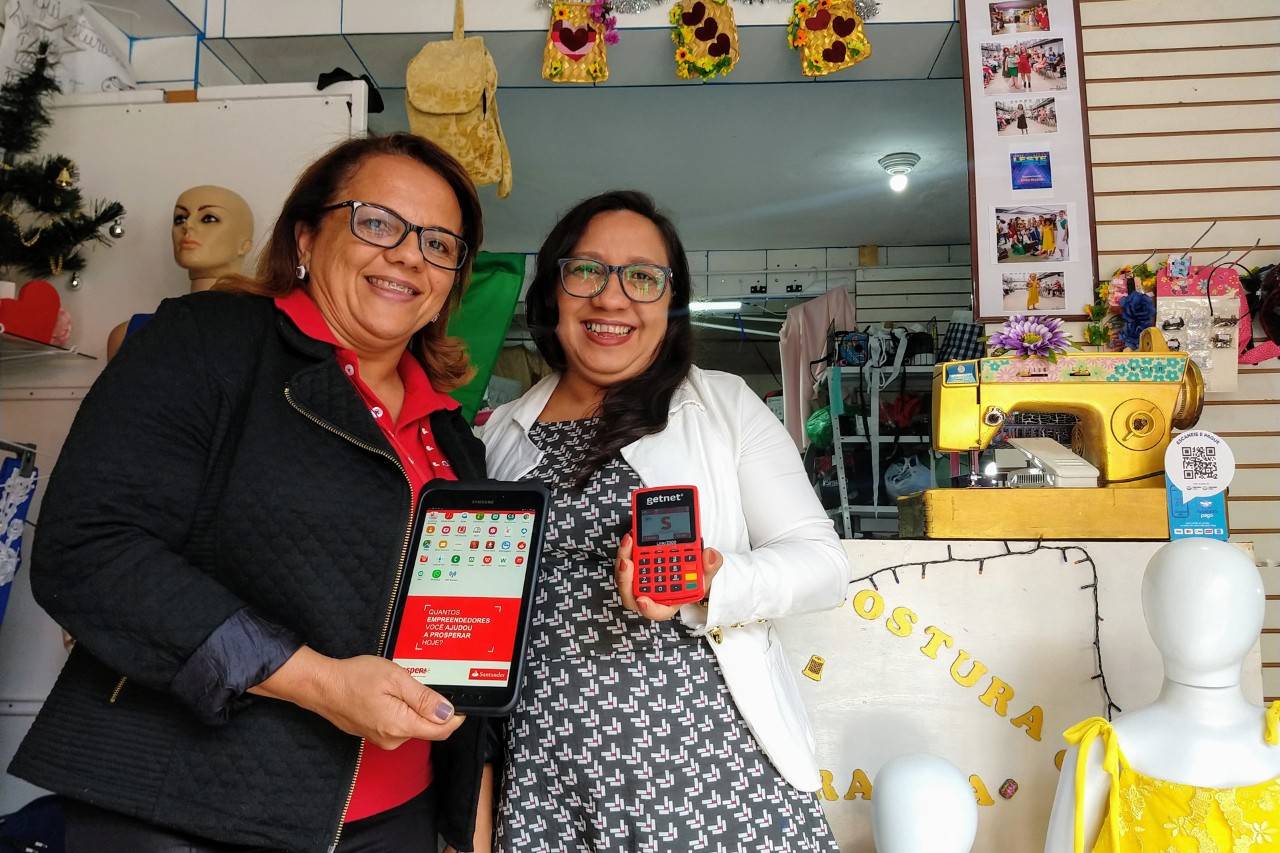
Microcredits allow low-income households to better cope with risk and to enjoy greater flexibility in how they earn and spend money. Mohamed Dabo takes a look at Spain’s largest bank’s microcredit initiative in Brazil
The Spanish banking powerhouse is one of the largest and strongest banking brands in Latin America. Santander is best known in the region as a leading provider of consumer and commercial loans to individuals and companies.
Santander is less known for its activity in the realm of microcredit, where its Spanish arch-rival BBVA is better known through its microfinance foundation Fundación Microfinanzas BBVA.
However, data from Santander indicates that its high-tech and old-fashioned community outreach is helping unbanked Brazilians get access to the financial system.
In a country with a population of some 200 million, it is sobering to acknowledge that more than a quarter of them are unbanked.
With 50 million people stranded without access to a bank account or credit facility, small wonder Brazil’s financial recovery has slowed markedly in recent years.
How well do you really know your competitors?
Access the most comprehensive Company Profiles on the market, powered by GlobalData. Save hours of research. Gain competitive edge.

Thank you!
Your download email will arrive shortly
Not ready to buy yet? Download a free sample
We are confident about the unique quality of our Company Profiles. However, we want you to make the most beneficial decision for your business, so we offer a free sample that you can download by submitting the below form
By GlobalDataYet at this very moment seeds are being planted which are expected to grow into flourishing financial ecosystems which transform the economy.
Prospera: financial empowerment for the most vulnerable
The solution is called Prospera (Portuguese for Prosper) and is making inroads into the unbanked masses of Brazil at a startling rate, through a combination of high-tech and old-fashioned community outreach.
If early results are anything to go by, it is a model which could be rolled out around the world.
The impact of financial inclusion on economies and employment should not be underestimated: it is expected to increase the wealth of emerging economies by $3.7trn over the next decade.
Much of this will be driven by the humble smartphone. Apps and new technology on these everyday devices present huge opportunities to reach communities previously beyond the reach of traditional banks.
As Margaret Miller, Global Lead for Responsible Financial Access at the World Bank, puts it: “Some innovations will help developing countries leapfrog into this new tech era.
“This could have a significant – and potentially highly positive – impact on financial inclusion, and fundamentally change the nature of financial infrastructure.
“However, these opportunities come with potential risks, such as those related to (un)fair lending practices related to unmonitored use and analysis of big data or increased systemic vulnerabilities due to threats to cybersecurity.”
So, it is worth pausing to consider specific examples of this brave new world of microfinance in action.
Where credit can be a lifeline
Across Brazil – a huge country where small towns and cities can be extremely isolated – Santander has been rolling out its Prospera initiative. Research shows that 80% of micro-entrepreneurs in the country go bankrupt within two years of opening for business.
This is driven by two significant roadblocks: no access to credit and a lack of knowledge about how to run a business.
Credit is often the difference between a small business surviving a lean period or going bust. But without good financial education it does nothing more than delay the demise of the business.
“That’s one of the main reasons why a lot of micro-entrepreneurs fail – we need to teach them, not only come up with fancy products,” says Tiago Abate, head of Prospera, Santander Microfinances.
“By reaching out to more isolated communities through our agents we researched what they really need from us.
“We found out that they don’t just need access to credit – they need it fast. And through technology we have been able to reduce the time it takes to approve credit terms from ten days to ten seconds.
“With smartphone apps you eliminate the need for paperwork. And once somebody has been shown how to access credit, they can do it themselves from then on through another app, Super-digital.”
Positive ripple effect
The results of this approach have been nothing short of transformative. Over the previous 14 years the company had built up a customer base of 100,000.
In just 12 months they more than doubled it. Next year the projection is to reach more than 600,000 customers, with more than a million by 2020.
It is also notable that 70% of microcredit recipients under Prospera are women – a demographic vital to the continued economic progress in developing nations.
“The business is doubling every year, which goes to show that you can transform communities and provide good returns at the same time,” adds Abate.
Smartphone apps are now offering access to credit, transactional accounts and mortgages. They can also act as mobile card machines – a development which brings us closer to a cashless society.
The positive ripple effect of microcredits is well established. For every microentrepreneur who accesses this credit, five more apply to do the same. Each of them employs on average three people.
This way, for every low-income business reached by field agents, 15 people are positively impacted.
Microcredit has a dismal track record of poverty alleviation
Of course, there are those who believe microfinance has failed since the concept originated in Bangladesh in the 1970s, in the hands of the Nobel laureate Muhammad Yunus.
By and large it has not lifted significant numbers of people out of poverty.
The game changer has been technology, which enables banks to reach markets they previously could not.
Efficiencies mean costs can be driven down enormously, while the backing of large organisations such as Santander means better deals can be offered than are available through most microfinance institutions.
It is an exciting time, as Yunus himself acknowledges, saying: “Poverty doesn’t come from the poor people themselves; poverty is imposed from outside. It’s something that we have in the economic system, which creates poverty. If you move those problems, the system, there’s no reason why anybody should be poor.”







